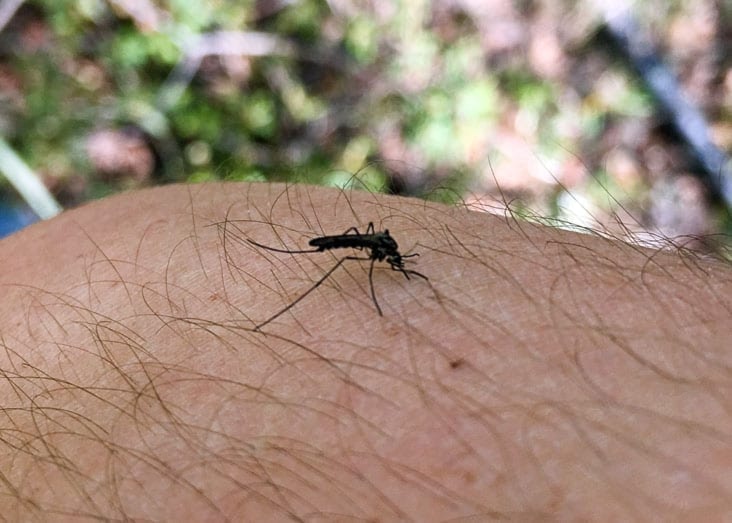Taz Stuart, an entomologist who has worked with the territorial government's Department of Environment and Natural Resources for mosquito control, described the low water levels and temperatures in the NWT as a "perfect scenario" to explain why there are so few blood-suckers in the territory this year.
"No water, no mosquitos, I can't say it enough."
When a female mosquito lays her eggs, she needs a water body, said Stuart. If there's little water, she'll lay it on the edge of the body.
That mosquito is playing the long game. Stuart explained that mosquito eggs can last years. So, whenever the water body their eggs are next to fills up again, there could come a spike in the mosquito population all of the sudden.
That's currently the case for Manitoba, said Stuart. "That's concerning."
According to the province of Manitoba, "adult mosquito surveillance conducted during the week of June 16 to 22, 2024 detected above average numbers of Culex tarsalis mosquitoes in all health regions in southern Manitoba."
Culex tarsalis mosquitoes are known for carrying diseases, most notably West Nile virus. "Culex tarsalis were detected in 20 of 21 trapping communities. To date, no positive West Nile virus (WNV) mosquito pools or horses have been identified," the province reports.
On the plus side, Stuart said that most of the wildlife will be happy with fewer mosquitoes feeding on them, barring certain species like dragonflies, which feed on the needle noses.
"That's the other problem, you'll see a massive decline" said Stuart, talking about the dragonfly population in the territory.
It's a consequence of climate change affecting the North, Stuart said. Another case in point: Stuart said he's discovered nine new species of mosquitoes over the past decade in the NWT.
"It increases the range of potential disease. Human disease, animal disease-carrying mosquitoes, that can potentially survive on the fringes right now."
It takes years to see the full effect of these types of changes and what consequences come with them. Although Stuart did say they've never detected West Nile Virus in the North, and even if he hates to say it, he's expecting it soon, he said.
"The fringe areas like Yellowknife and surrounding areas have the ability to support those new species," he said. Not all of those new mosquito species will carry a new disease for the NWT, Stuart stressed. Many will also find new things to feed on.
When asked what he sees for the future for the NWT's climate and water levels, he chuckled, saying only if he had a crystal ball.
He said he has the expectation that Yellowknife could follow a similar pattern as Manitoba: going from a drought to record rainfall. But he can't be sure, he said.
According to the GNWT's water monitoring bulletin, in the last five years, water levels on Great Slave Lake have shifted from being extremely low in 2019, back up to the highest on record from 2020 to 2022. They fell again in 2023 and have so far continued trending downwards.
